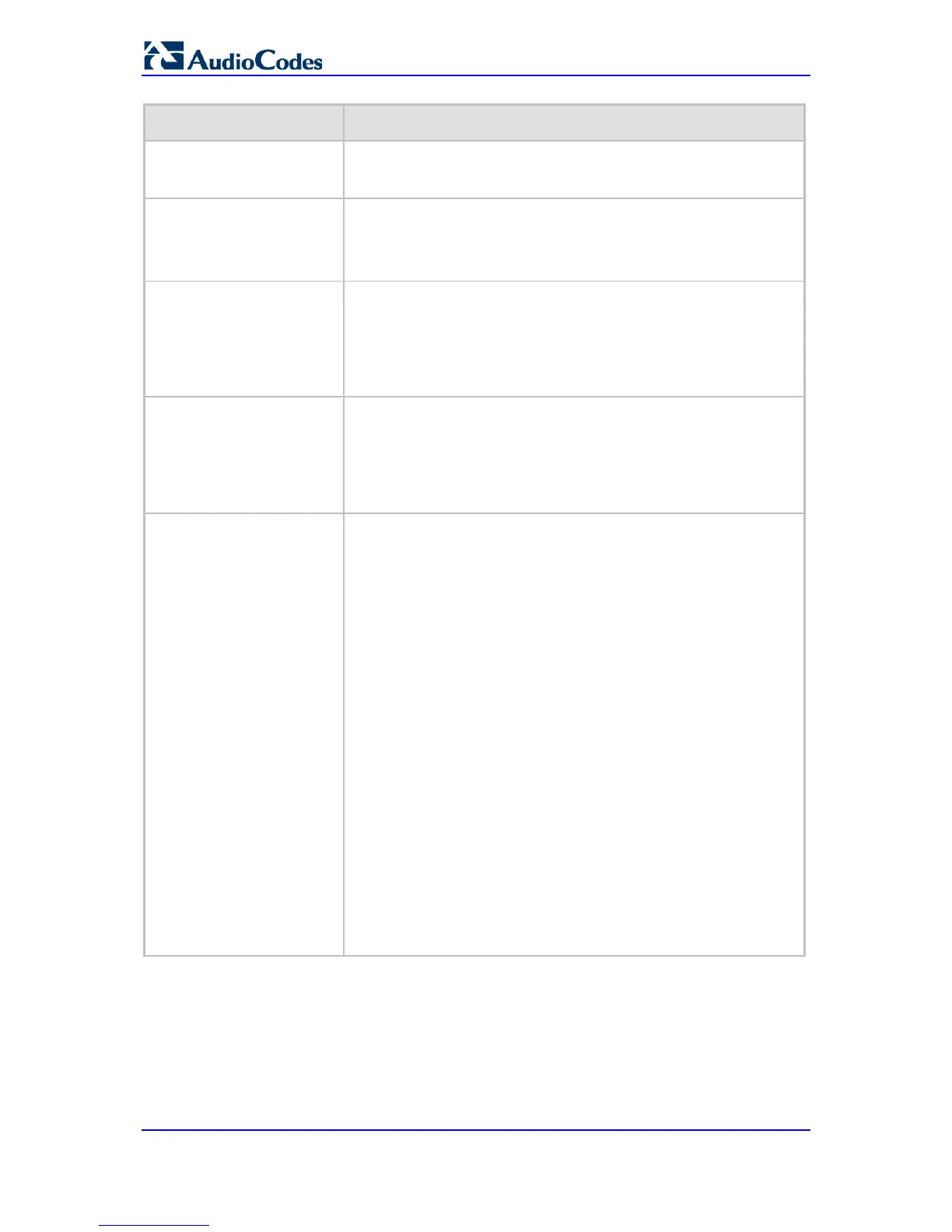For more information on SIP 3xx Redirect response handling, see
'Handling SIP 3xx Redirect Responses' on page 442.
Web: Enforce Media Order
[SBCEnforceMediaOrder]
Enables the device to arrange media lines (‘m=’ line) in the SDP
offer according to the previous offer-answer exchange (RFC 3264).
[0] Disable
[1] Enable (default)
Web: Lifetime of the nonce
in seconds
CLI: lifetime-of-nonce
[AuthNonceDuration]
Defines the lifetime (in seconds) that the current nonce is valid for
server-based authentication. The device challenges a message that
attempts to use a server nonce beyond this period. This parameter is
used to provide replay protection (i.e., ensures that old
communication streams are not used in replay attacks).
The valid value range is 30 to 600. The default is 300.
Web: Authentication
Challenge Method
CLI: auth-chlng-mthd
[AuthChallengeMethod]
Defines the type of server-based authentication challenge.
[0] 0 = (Default) Send SIP 401 "Unauthorized" with a WWW-
Authenticate header as the authentication challenge response.
[1] 1 = Send SIP 407 "Proxy Authentication Required" with a
Proxy-Authenticate header as the authentication challenge
response.
Web: Authentication Quality
of Protection
CLI: auth-qop
[AuthQOP]
Defines the authentication and integrity level of quality of protection
(QoP) for digest authentication offered to the client. When the device
challenges a SIP request (e.g., INVITE), it sends a
with the Proxy-Authenticate header or WWW-Authenticate header
containing the 'qop' parameter. The QoP offered in the 401 response
can be 'auth', 'auth-int', both 'auth' and 'auth-int', or the 'qop'
parameter can be omitted from the 401 response. In response to the
401, the client needs to send the device another INVITE with the
MD5 hash of the INVITE message and indicate the selected auth
type.
[0] 0 = The device sends 'qop=auth' in the SIP response,
requesting authentication (i.e., validates user by checking user
name and password). This option does not authenticate the
message body (i.e., SDP).
[1] 1 = The device sends 'qop=auth-int' in the SIP response,
indicating required authentication and authentication with integrity
(e.g., checksum). This option restricts the client to authenticating
the entire SIP message, including the body, if present.
[2] 2 = (Default) The device sends 'qop=auth, auth-int' in the SIP
response, indicating either authentication or integrity. This
enables the client to choose 'auth' or 'auth-int'. If the client
chooses 'auth-int', then the body is included in the authentication.
If the client chooses 'auth', then the body is not authenticated.
[3] 3 = No 'qop' parameter is offered by the device in the SIP 401
challenge message.

